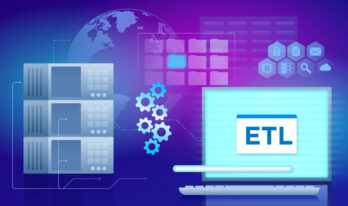The world is advancing rapidly with technology and innovations in every business sector. Moreover, an enormous amount of data generated shouldn't go unnoticed. Businesses should be able to drive insights and make decisions.
Here's where data mining comes into the picture. It's the process where organizations sort large amounts of data and solve complex problems with data analysis. Combining data mining techniques with business intelligence is an effective way to make optimal decisions.
In this guide, we'll understand how data mining is helpful in business intelligence for driving insights that mean business success.
Importance of Data Mining in Business Intelligence
Data mining plays a crucial role in running business analytics. The BI team can further use the insights to study the current state of the business and plan strategies accordingly. Effective utilization of data mining in business intelligence can help in:
- Management of customer-facing operations such as marketing, sales, and support.
- Increasing the supply chain components like logistics, inventory, manufacturing, and more.
- Boosting digital security by detecting fraud and cybersecurity planning.
How do Data Mining and Business Intelligence Work Effectively?
Imagine making decisions about your business independently without having to rely on guesswork. With data mining and business intelligence, this data-driven world is a reality. Together, both can help improve your business in different ways. It can help you make well-informed decisions and save you time and money.
There's a specific structure for data mining in business intelligence. This remains quite fixed.
Understand Your Business
If you want to succeed in using data mining in business intelligence, begin by identifying its purpose. A series of steps in the plan can help you use the data. Visualizing the data mining algorithm can be a challenging task that lets you effectively highlight the purpose of data mining.
Understanding Your Data
After you know the primary purpose of data mining, it is time to handle your data. Businesses store and monetize data in different ways. How you create, categorize, and commercialize data depends on your data and practices.
Data Modelling
Statistical algorithms are deployed to discover hidden patterns in data, and many trial-and-error strategies are used to find relevant trends that boost revenue metrics.
Data Evaluation
The different steps involved in data modeling need to be evaluated microscopically for errors. You need to ensure that all the pathways lead to simplifying the operations and augmenting profits.
Implementation
The last step is to work on the findings in an ideal way. The recommendations' field trials need to be handled on a smaller scale and then expanded into every branch open upon validation. Now, you clearly know how milestones are built into reality.
Which are the Common Data Mining Methods?
Data mining in business intelligence involves different methods and techniques to drive critical insights from large data sets. Here, we've listed the standard data mining techniques used in the business.
Classification
Classification is one of the most common data mining techniques. This technique assigns predefined labels to new data based on existing trained data sets. It is used in different scenarios, such as identifying spam emails and credit scoring.
Clustering
In the process of clustering, similar data sets are based on identifying features; however, they are without predefined categories. Companies use the clustering method for image segmentation, anomaly detection, and more.
Regression Analysis
Regression analysis predicts and delivers numerical values based on dataset variables. Critical application areas include price estimation, demand projection, and sales forecasting.
Neural Networks
A neural network is a set of algorithms that mimics neural functions to reduce complex patterns in data sets. Data mining applications associated with neural networks include predictive modeling, image recognition, and NLP.
Wrapping it Up
Data mining and business intelligence are powerful tools that can help boost your business. Stay caught up in the competition. In the above blog, we've given an overview of how data mining and business intelligence can work together to drive insights, patterns, and more. To stay updated, visit our blog section now.
Also Read:
Effective Data Preparation for Data Mining Success: Top Tips and Tricks
Data Cleaning and Preprocessing: Crucial Steps for Successful Data Mining





